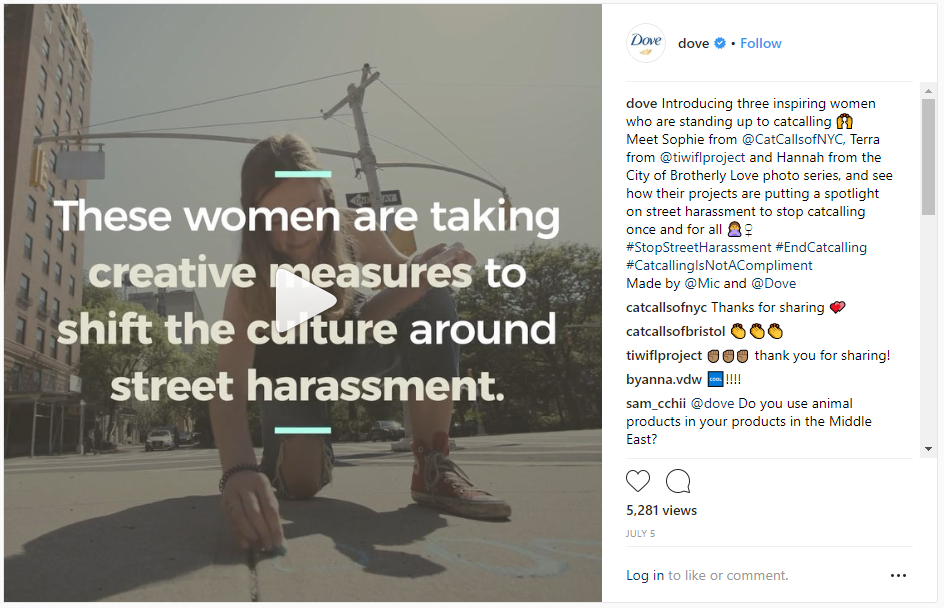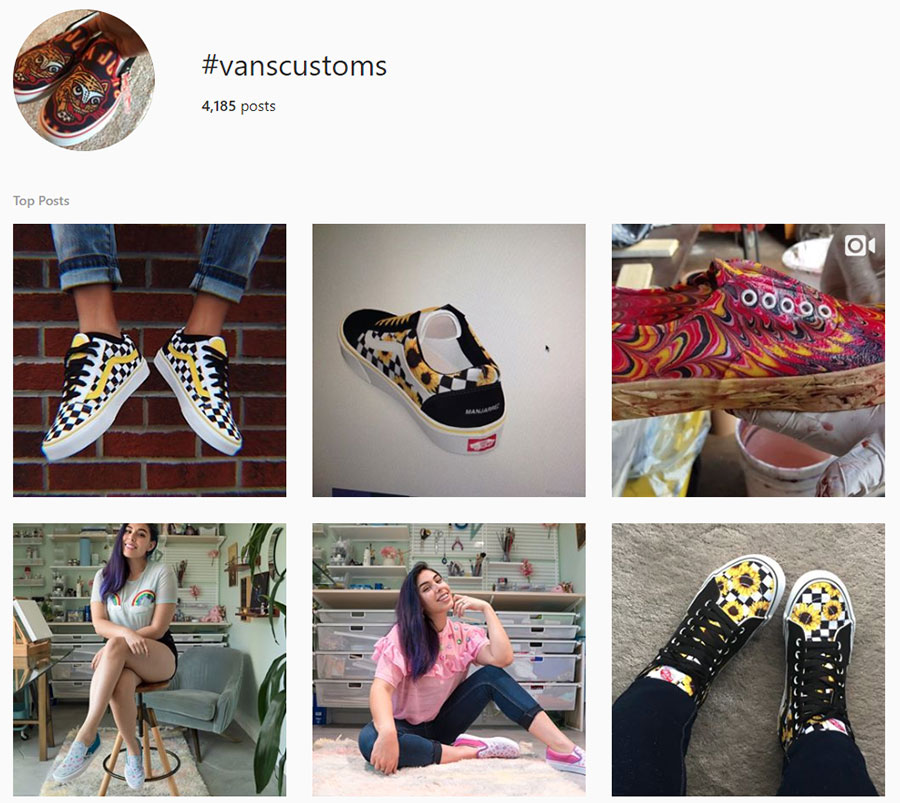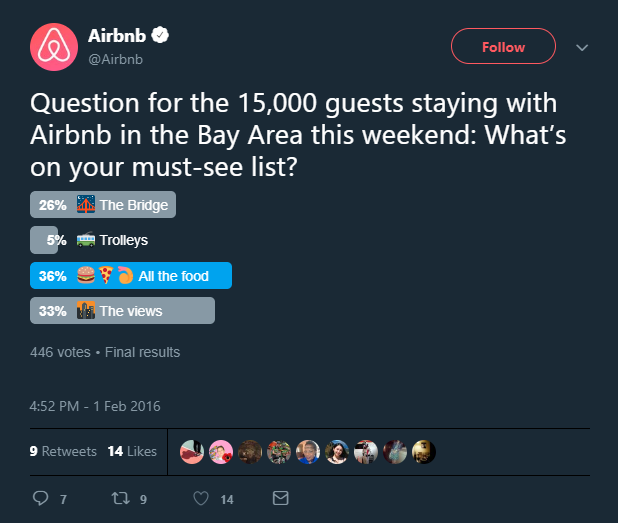If you’re starting to get the impression that advertising at your customer is no longer effective, you’re correct. The reason is simple – placing ads that do nothing but shout your own message no longer work in today’s attention economy.
Modern customers are used to interacting, dialoguing, and sharing what they find valuable, exciting, or interesting. They demand engagement and partnership. 2018 research shows 13% of consumers ranked ‘content I can interact with’ as either the first or second most important characteristic they want in content.
Companies that utilize this interaction will market effectively. Those that don’t will not.
Against this backdrop, companies must deliver a two-way conversation. Consumers aren’t interested in being told what to do; they are interested in partnering with brands to build meaningful experiences for themselves and their social networks.
This is the space where interactive marketing lives.
What Is Interactive Marketing?
Interactive marketing is a catchall phrase for any marketing tactic that first induces customers to express preferences and then reacts accordingly to meet their needs, wants, and expectations. It is different from traditional advertising and even inbound marketing because it is customer-initiated.
Interactive marketing campaigns rely on consumers interacting with a piece of content. This is why it is sometimes referred to as “trigger” or “event” based marketing.
Interactive Marketing Current Trends
Events take a number of forms. Most of them piggyback on the modern social media attention economy, but this isn’t a requirement. Interactive marketing content can live on any company asset including a website, blog, landing page, etc. The platform is important, but not a determining factor.
Here are three current interactive trends for companies:
• Contests & Giveaways – Consumers take action to enter the chance to win a prize
• Personality & Trivia Quizzes – Consumers answer a series of questions that promise to either give them insight into their inner workings or test their knowledge of a topic
• Polls – Consumers respond to a specific question by ‘voting’ for one of the available response options
We’ll dive into the details of these more in a bit. But before we do, let’s look at the bigger picture of what these content pieces should be trying to accomplish.
Effective interactive marketing content works in three ways: driving engagement through promotion, measuring consumer reaction, and adapting to consumer expectations.
How Do You Run an Interactive Marketing Campaign?
Customer-initiated interaction is neither a synonym nor an excuse for passivity. Companies are active in every stage of a successful interactive marketing campaign.
Drive engagement through promotion
Interactive marketing is not just about interaction — it’s about the right interaction. One good campaign tactic is weaving interactive content into the fabric of relevant events to how consumers use the brand to achieve value in their lives.
This is what companies do when they create contests in conjunction with a big event and then make retweeting, reposting, or liking a piece of content the way to enter. Find events with a tie-in to the brand’s values, and highlight the nexus by giving something away.
Attaching the positive emotion of an event relevant to a brand in front of a target consumer market is remarkably effective.
For example, have you ever thought to yourself, “Gluten Free and Vegan Whoopie Pies are the food missing from my BBQ?” If yes, you would have loved The Piping Gourmets’ 4th of July giveaway, because you could have won a free case of them to bring yummy goodness to all the friends and family sitting around your patio table. All you had to do was follow the account and retweet the post advertising the contest:
Another good example is the campaign by MoonPie. Their campaign around the 2017 solar eclipse connected the wonder and camaraderie surrounding the event directly to its brand:
Measure consumer reaction
There are two ways to empirically measure consumer reaction to interactive marketing campaigns:
The first is with metrics that show reach and influence. Likes, visits, shares, and anything that measures interaction fall into this category. These are commonly referred to as “performance” or “engagement” metrics. All campaigns measure them the same way.
The second is with metrics that directly measure business objectives. These metrics have a direct connection to ROI and vary based on the goal.
Performance/Engagement Metrics
Because a campaign’s potential is tied directly to its visibility in the market, interactive marketing requires consumers to engage with content. Performance metrics measure this by tracking organic social media promotion of the campaign by consumers.
Likes, shares, and clicks are the most well-known Performance Metrics, but there are many others:
• Invites measures the number of word of mouth referrals the content generates
• Video Average Watch Time measures how much of consumers’ attention the content captures and how much of the message is getting heard
• Post Comments measures the number of consumers who find content compelling enough to discuss
Performance Metrics do not prove a connection between a campaign and profit. Reach is an indirect indicator of success, but not a substitute for metrics that draw a direct line between a campaign and ROI.
ROI Metrics
Interactive marketing content should drive consumers to other company assets that nurture and/or convert leads. ROI metrics measure these goals, and so will change depending on business objectives. Here are a few (non-exhaustive) examples.
• Websites that monetize traffic can focus on how effective interactive marketing content is at generating unique website impressions, increased time on page, and ultimately, advertising revenue
• E-commerce companies can measure content’s impact on the total cost of acquisition and referral traffic
• B2B and B2C companies can see how many qualified leads interactive content is generating and which customer personas are responding well
Measuring ROI metrics requires planning and technology. Effective interactive content is a piece in an overall lead-generation strategy. Use a good CRM to track performance and see if the content is effective at executing its role in the sales pipeline.
Taken together, Performance Metrics and ROI Metrics give a comprehensive view of content’s effect on a consumer market.
Adapting to consumer expectations
Consumer preferences and expectations are the foundation of interactive marketing. They are also always changing, and adapting to the shifts is a process that never stops.
Dove is a good example of this. For four decades, the company focused on the functional benefits of their beauty products. But when research showed consumers’ expectations turning against traditional societal conceptions of feminine beauty, the company shifted focus.
In 2000, the brand launched “the campaign for real beauty” to reposition itself as a champion of an inclusive view of what makes women beautiful. This adaptation to consumer expectations opens the door to very creative interactive marketing campaigns.
A good illustration of this is Dove’s anti-catcalling campaign. By profiling three women bringing attention to the problem of street harassment and encouraging others to share their stories, Dove meets current expectations for beauty brands to place themselves in the center of conversations surrounding beauty:
What Do Interactive Marketing Campaigns Need To Be Successful?
Engagement, measurement, and adaptation are what makes interactive content work. They are the function of interactive marketing campaigns. But what makes for compelling content in the first place?
Details vary by the consumer market, brand, and objective. However, there are common threads. Here are three general principles to follow when creating compelling content:
Relevancy
Relevancy is focused on the consumer’s journey, and creating interactive content that will be effective in generating and/or moving leads through the sales pipeline.
A good example is the Valdo Champagne company’s giveaway of a $7,500 trip to Italy on Instagram. Users just needed to follow the account, snap a picture of their unique Valdo inspired drinks, and upload the receipt. The giveaway was relevant to current Valdo drinkers but also offered relevancy to new potential consumers by highlighting innovative ways to use the product.

Authenticity
Authenticity is a prerequisite to the kind of consumer trust that drives engagement. It builds credibility for the brand by naturally positioning it in situations where it is relevant
Oreo cookie is a good example of this. Their social media posts often present users with an everyday situation and them prompt them to tell people how they use Oreo’s within it:
https://twitter.com/oreo/status/346994326116634626?s=11
By inviting consumers to tell their own stories, Oreo creates organic mentions of product use in real-life situations from non-company representatives — an excellent display of brand authenticity.
Fun
Capture consumer’s attention with relevancy, make them willing to engage through authenticity, and then keep them interested and coming back for more with a positive, fun experience. Brands often accomplish this by bringing the promise of their messaging to its logical, extreme conclusion.
The Vans shoe company demonstrated this with its Custom Culture contest. Students around the United States were tasked with customizing their sneakers with their own sense of personal style and uploading the results.
By using its sneakers to showcase the creative talent of its consumer base in a unique way, Vans created a fun experience that brought its messaging of a cool, but personal, brand to life.
In Depth: What Are the Current Trends in Internet Marketing?
Knowing how interactive marketing content works and what makes content compelling still leaves one question unanswered: how do companies create it?
Three main types of interactive content were already mentioned: contests & giveaways, personality & trivia quizzes, and polls.
Below, we take a deeper dive into each one.
Contests & Giveaways
Giving things away for free gets a brand noticed. Humans are hard-wired to love getting something for nothing, and contests and giveaways give it to them. A contest or giveaway is easily relevant, authentic, and fun. No wonder 46% of consumers say they increase the likelihood they will purchase something.
Many consumers will not hesitate to give away lots of valuable personal information for the chance at a ‘free’ product. This data can give a brand lots of insight into their customers that would be extremely difficult, if not entirely impossible, to come by otherwise.
Here are some best practices to keep in mind:
• Prize specificity: Giveaways must be related to the brand. Traffic gained through prizes of general interest (such as cash) will not attract qualified leads
• Compelling design: Stand out from the crowd with clear, powerful branding. Make the word ‘giveaway’ prominent; use images that convey a professional, serious tone
• Consider the timing: Relevant event tie-ins are an excellent way to use hashtags and community hype to get exposure to a new audience
Personality & Trivia Quizzes
Good interactive content shifts the focus from the business to the consumer. Asking people questions about themselves through a personality quiz is an excellent way to do that. Or, ask them questions about a topic or person they care about.
Relevancy and fun are built into the format. Who doesn’t find talking about themselves or their opinions relevant and enjoyable? Because quizzes that provide insight into personality or offer relevant product selections are based on answers provided by the customer, they also feel authentic.
The business intelligence provided by a well-built personality or trivia quiz is excellent. Results provide a natural lead-in to ask for consumer email addresses. Answers also yield valuable insight about attaching a buyer persona to a lead and determining where they should be placed in the sales funnel.
A good example of this is the online travel booking company Orbitz’s “Which destination is your true love?” quiz, which allowed consumers to discover their ideal vacation spot — by handing over valuable information to Orbitz about their travel preferences:
https://www.orbitz.com/blog/2017/02/vacation-matchmaker-quiz-destination-true-love/
Best practices to get the most out of this type of content focus on compelling design to engage shares and robust analytics to track results. Consider using software like Woobox that specializes in a balance between customization and proven techniques.
Polls
Similar to quizzes, but much more targeted. Polls don’t yield the same volume of business intelligence, but when done correctly can give insight to a specific data point such as pain points and preferences.
Use cases exist at every point in the sales funnel, but they are particularly valuable when planning something new. Best practice is to use them to gauge interest or uncover preferences before launching something new.
For example, Airbnb uses polls to gauge consumer interests in the attractions in different cities. It’s impossible to know exactly how the company uses this data, but it’s easy to see how it could help guide decisions about new services to their consumers:
Conclusion
Interactive marketing is effective. Consumers expect brands to engage in dialogue with them and bring value in relevant, authentic, and fun ways.
The days of advertising by shouting at consumers is over. To be successful in today’s marketing environment, brands must keep up with the new trends for building content that drives engagement, measuring the impact, and shifting to meet changing consumer expectations.
To get all the tools you need to execute these trends yourself, open a free Woobox account right now to get started building interactive content campaigns. Free accounts can make as many giveaways or quizzes (or any promotion) they like! Subscriptions are only required to publish and run a campaign.





